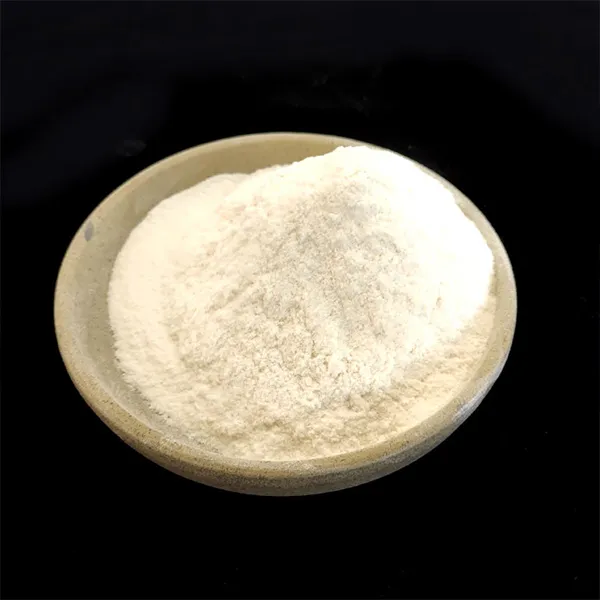Understanding Ether Cellulose A Versatile Polymer in Modern Applications
Ether cellulose, a modified cellulose derivative, is an important polymer that has found its place in various industries thanks to its unique properties. This article explores the origins, properties, applications, and future prospects of ether cellulose, highlighting its significance in contemporary technology and daily products.
Origins of Ether Cellulose
Cellulose, a biopolymer derived from plant cell walls, is the most abundant organic polymer on Earth. It consists of long chains of glucose units linked by β(1→4) glycosidic bonds. While cellulose itself has many applications—such as in paper, textiles, and food—it has limitations in solubility and reactivity. To overcome these challenges, chemical modifications have been introduced, leading to the creation of ether cellulose.
Ether cellulose is synthesized by modifying the hydroxyl groups present in cellulose through etherification. The most common agents used for this modification are alkyl halides or anhydrides, which can introduce hydrocarbon chains, thereby enhancing the solubility of cellulose in organic solvents and water. The most well-known examples of ether cellulose include ethyl cellulose, methyl cellulose, and hydroxypropyl methylcellulose (HPMC), each characterized by varying degrees of substitution and solubility.
Properties of Ether Cellulose
The modification process imparts several beneficial properties to ether cellulose. One of the most notable characteristics is its solubility. Unlike native cellulose, which is insoluble in water, ether cellulose can dissolve in various solvents, making it versatile for different applications. Additionally, ether cellulose exhibits excellent film-forming capabilities, viscosity, and adhesive properties, which are crucial for many industrial uses.
The non-toxic and biodegradable nature of ether cellulose also makes it appealing, especially in industries such as pharmaceuticals and food
. Its ability to form gels and hydrogels has led to its use in controlled-release drug formulations and as a thickening agent in food products and cosmetics.ether cellulos

Applications of Ether Cellulose
The versatility of ether cellulose allows it to be employed across diverse sectors. In the pharmaceutical industry, it is commonly used as a binder and coating agent in tablets and capsules, enhancing the bioavailability of active ingredients. Moreover, HPMC is widely utilized in ophthalmic preparations and as a thickening agent in eye drops owing to its biocompatibility and safety.
In the food industry, ether cellulose functions as an emulsifier, stabilizer, and thickening agent. It can improve texture and mouthfeel in products such as sauces, dressings, and dairy items. Its ability to retain moisture also extends the shelf life of food products—a crucial factor for manufacturers concerned with product quality.
In the construction and paint industries, ether cellulose is used as a thickener and water-retention agent in cement mortars and paints, providing improved workability and performance. Its application in cosmetics as a suspending agent, emulsion stabilizer, and film-former reveals its multifunctional nature, contributing to the efficacy and stability of beauty products.
Future Prospects
As industries increasingly shift towards sustainable practices, the importance of biopolymers like ether cellulose is set to grow. The demand for eco-friendly materials is pushing research and development towards optimizing the production and application of cellulose derivatives. Innovations in the synthesis of ether cellulose aim to improve its functionality while reducing environmental impact, such as using green chemistry methods and biocompatible solvents.
In conclusion, ether cellulose represents a significant advancement in polymer science, marrying the natural benefits of cellulose with enhanced functionality. Its diverse applications in pharmaceuticals, food, construction, and cosmetics underscore its utility and potential for growth in future markets. As research continues to unveil new pathways for its use, ether cellulose is poised to become increasingly integral to a variety of industries, underscoring the essential role of sustainable materials in modern society.
-
The Application and Significance of Construction RdpNewsMay.19,2025
-
Industrial Grade HpmcNewsMay.19,2025
-
Building Coating Adhesive Building Coating Adhesive HpmcNewsMay.19,2025
-
Application Of Hpmc For Detergent For Detergent In DetergentsNewsMay.19,2025
-
Application Of Hpmc Cellulose In Cement-Based MaterialsNewsMay.19,2025
-
Application Of High Quality Hpmc For Construction In The Field Of ConstructionNewsMay.19,2025




